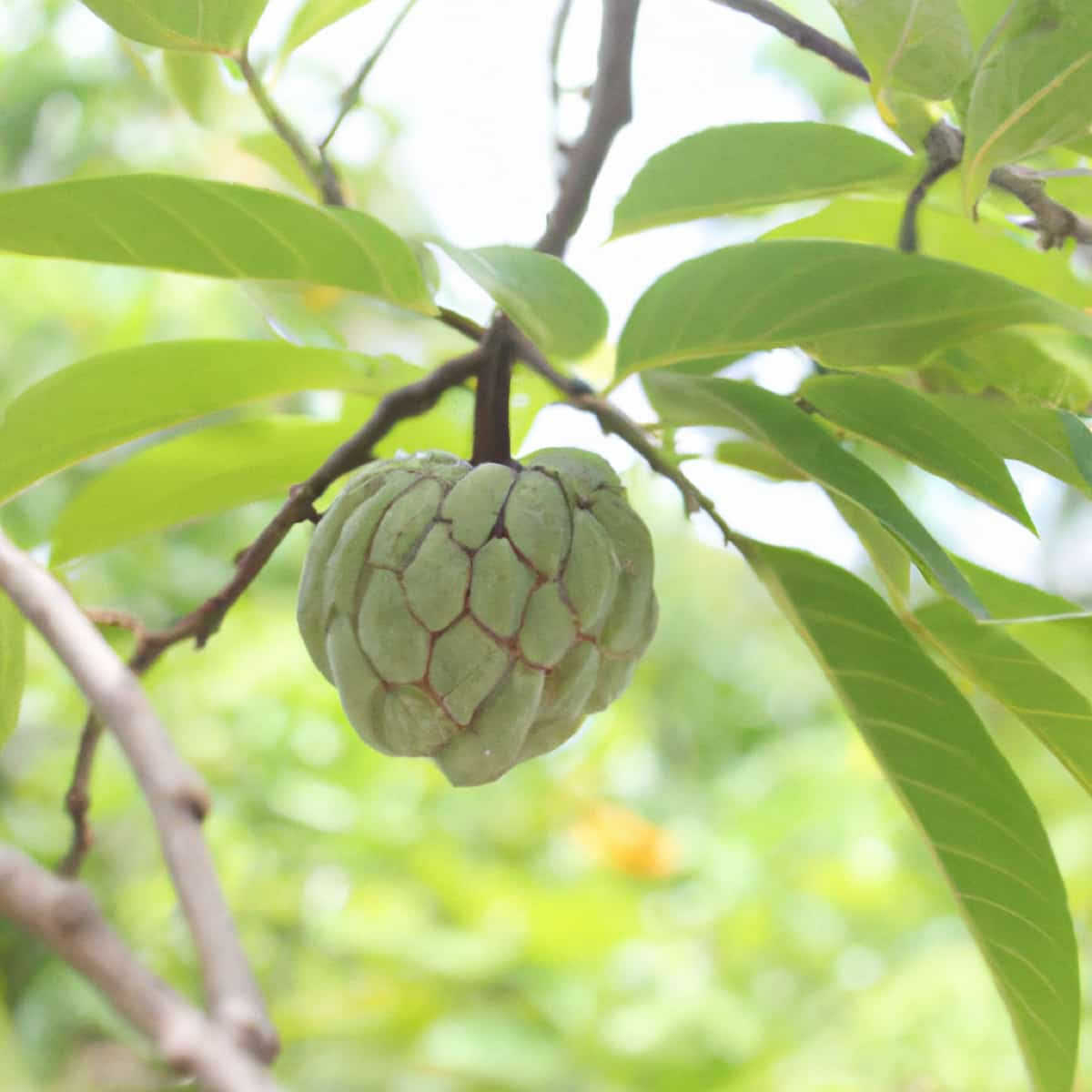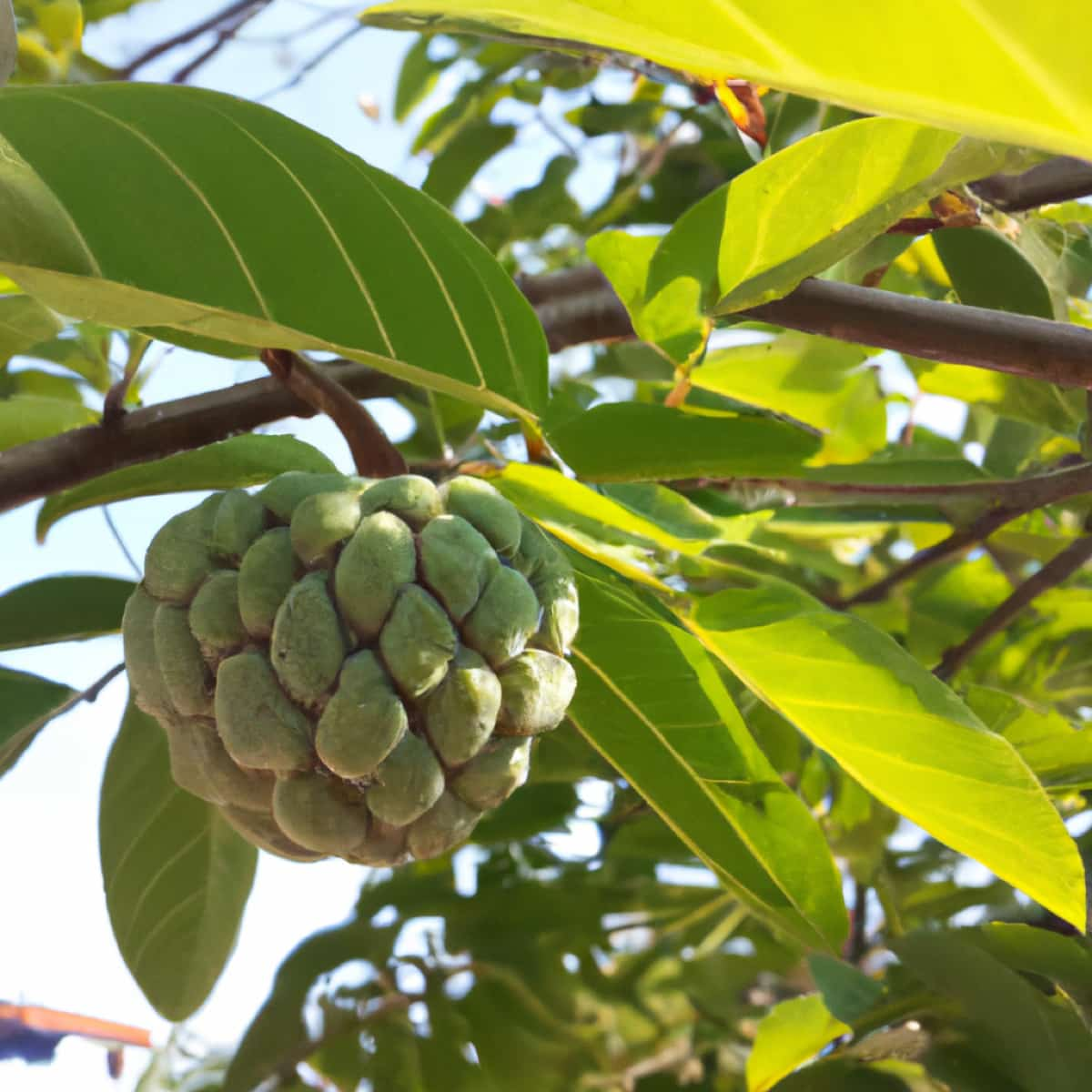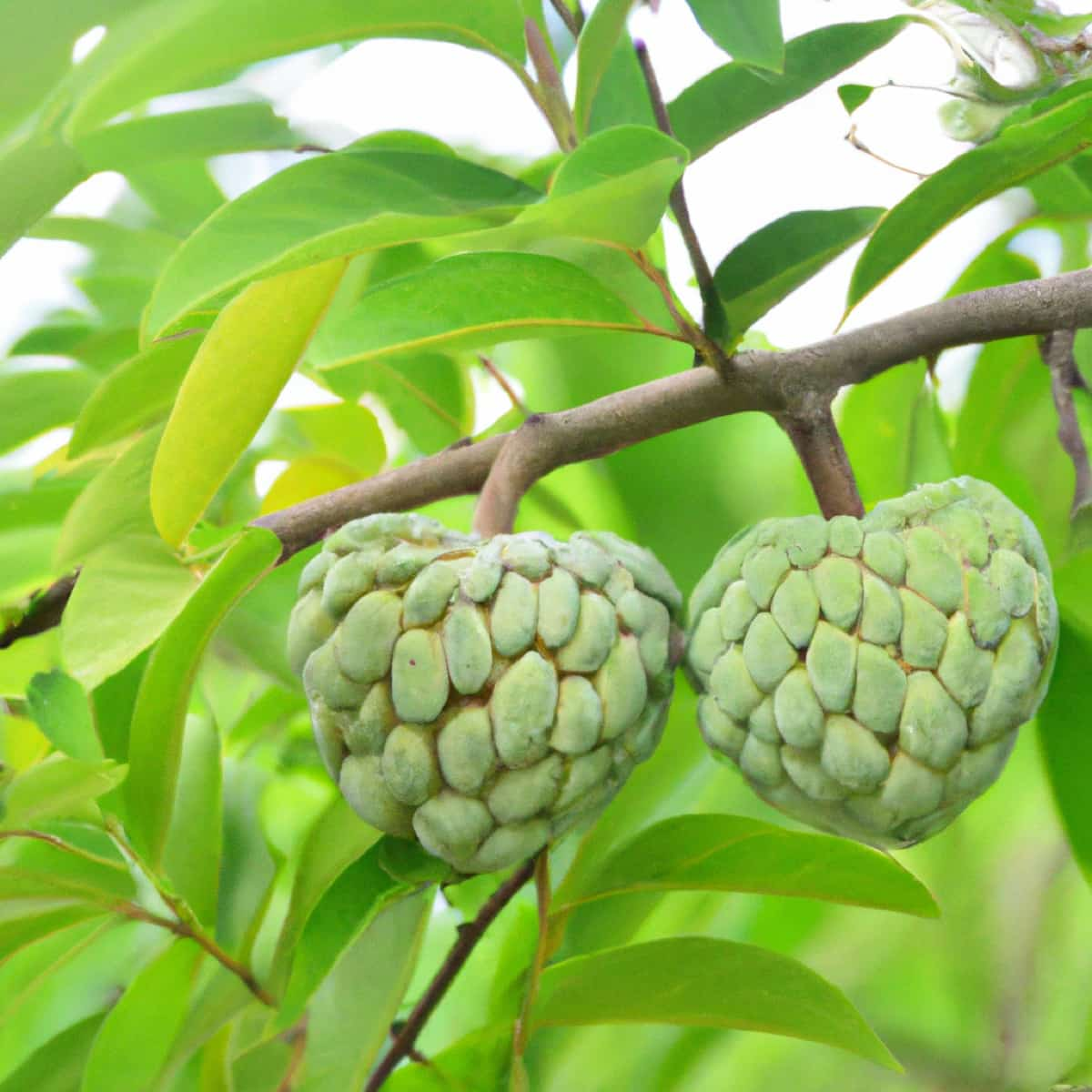Custard apples, also known as cherimoyas, are delicious fruits that require pollination to produce a good harvest. Pollination can be achieved through various methods, including hand and natural. This article will explore these methods and provide some tips for successful custard apple pollination.

How to Pollinate Custard Apple Trees
Step-by-step Guide to Pollinating Custard Apple Flowers
- First, identify the correct stage to pollinate custard apple flowers. Ideally, choose fully open flowers with visible pollen on the stamens.
- Gather the necessary materials for pollination. You will need a small paintbrush or cotton swab, a clean container to hold the pollen, and access to custard apple flowers ready for pollination.
- Carefully collect the pollen from the anthers of the custard apple flower using the paintbrush or cotton swab. Gently brush the anthers to collect as much pollen as possible.
- Transfer the pollen to the stigma of another custard apple flower. The stigma is the female part of the flower and is usually located at the center. Gently brush the stigma with the collected pollen, ensuring good contact between the two.
- Continue this process with multiple flowers to increase the chances of successful pollination. Remember to collect fresh pollen for each flower to avoid cross-contamination.
- After pollination, cover the flowers with a breathable cloth or mesh to prevent damage while still allowing air circulation.
- Regularly monitor the pollinated flowers for signs of fruit development. Provide adequate water, sunlight, and nutrients to support the growth of the fruit.
Best Time to Pollinate Custard Apple Trees
To ensure successful pollination of custard apple trees, it is important to understand the best time for this activity. The ideal time to pollinate custard apple trees is during their flowering season, which typically occurs in late winter or early spring, depending on the specific climate and region. Flowering in custard apple trees usually begins when the tree is several years old, typically after 3 to 4 years of growth.
Natural Methods for Pollinating Custard Apple
One natural method for pollinating custard apples is through the use of insects. Bees and butterflies are known to be effective pollinators for custard apple trees. By attracting these insects to your garden or orchard, you can increase the chances of successful pollination. Planting attractive flowers for bees and butterflies, such as lavender, marigold, and sunflower, can help create a pollinator-friendly environment.
Another natural method for pollinating custard apples is through the wind. Custard apple trees produce small, lightweight pollen grains easily carried by the wind. It is important to ensure adequate airflow in your garden or orchard to take advantage of this method. Avoid planting custard apple trees in areas with dense vegetation that may block the wind. Pruning the trees to open the canopy can also help facilitate wind pollination.
How to Hand Pollinate Custard Apple Trees
Hand pollination is another option for ensuring successful pollination of custard apples. This method involves manually transferring pollen from male flowers to female ones. To hand-pollinate custard apples, you can use a small brush or cotton swab to collect pollen from the male flowers and gently brush it onto the stigma of the female flowers. This method can be time-consuming but effective in cases where natural pollinators are scarce.
Attracting Pollinators for Custard Apple Fruit Set
Attracting pollinators is essential for the custard apple fruit set. Implementing strategies like providing a suitable environment for pollinators, offering food and shelter, avoiding harmful pesticides, and creating an appealing planting scheme can increase the chances of attracting pollinators, thereby increasing a bountiful custard apple harvest. Embracing these techniques will benefit your orchard and contribute to pollinator populations’ overall well-being.
In case you missed it: Project Report of 1-Acre Custard Apple Farming: Cultivation Cost and Profit Analysis

Tools and Supplies for Custard Apple Pollination
- Pollen Brush: To transfer pollen from the flower to the flower.
- Tweezers: Tweezers are useful when extracting pollen from flowers.
- Ziplock Bags: To collect and store pollen.
- Pollination Bags: To isolate the flowers during the pollination process.
- Cotton Swabs: As an alternative to pollen brush for transferring pollen
- Pruning Shears: For removing any unwanted branches or leaves that hinder the pollination process.
- Gloves: Protect your hands from any potential allergies or irritations caused by handling the flowers or pollen.
Tips for Successful Custard Apple Pollination
- Keep track of the flowering period and plan your pollination activities accordingly. Be sure to monitor the tree closely and look out for signs of flowering.
- The custard apple flower consists of both male and female reproductive parts. The male parts, called stamens, produce pollen, while the female part, called the pistil, contains the ovary. Familiarize yourself with the flower structure to facilitate effective pollination.
- Encourage the presence of natural pollinators in your garden by planting attractive flowers and providing suitable habitats. Avoid using harmful pesticides that may harm or repel beneficial insects.
- If natural pollinators are scarce or unreliable, hand pollination can be done to ensure a successful fruit set. Gently collect pollen from the stamens using a small brush or cotton swab.
- To improve the chances of successful pollination, have multiple custard apple trees nearby. This will allow for cross-pollination between trees and increase the diversity of pollen available for fertilization.
- Be mindful of the weather forecast and avoid pollinating during rainy or windy days. These conditions can hinder the transfer of pollen and reduce the chances of successful fertilization. Choose a calm, dry day for optimal pollination.
Common Mistakes to Avoid When Pollinating Custard Apple
- Improper Pollination Timing: To avoid this mistake, closely monitor the tree’s flowering pattern and pollinate when the flowers are receptive.
- Assuming Pollinators will do all: To avoid this mistake, create a pollinator-friendly environment by planting flowers that attract pollinators or by keeping beehives nearby.
- Improper Pollination Techniques: Use a small brush or cotton swab to collect pollen from the male flowers and gently transfer it to the female flowers.
- Over-Pollination: Ensure a balanced amount of pollen is transferred to each flower, allowing optimal fruit development.
- Lack of Diversity: It is advisable to plant different varieties in close proximity to encourage cross-pollination and increase the chances of a higher fruit yield.
- Neglecting Environmental Factors: Ensure that custard apple trees are well-maintained and provided with optimal growing conditions.
Pollination Requirements for Different Custard Apple Varieties
Pink’s Mammoth: This variety is self-sterile, requiring cross-pollination with another compatible variety to set fruit. African Pride is a suitable pollinator for Pink’s Mammoth. Planting both varieties nearby will ensure successful pollination and fruit development.
KJ Pinks: Another self-sterile custard apple variety, KJ Pinks also requires cross-pollination for fruit formation. Compatible pollinators for KJ Pinks include African Pride and Pink’s Mammoth. Planting these varieties together will encourage adequate pollination and higher fruit yields.
Hillary White: Like KJ Pinks, Hillary White is self-sterile and needs cross-pollination to produce fruit. African Pride and Pink’s Mammoth are suitable pollinators for this variety. Planting these compatible varieties in the same area will promote successful pollination and increase fruit set.
In case you missed it: 9 Causes of Dying Custard Apple Tree and How to Fix It?

Conclusion
Custard apple pollination can be achieved through hand pollination or natural pollination methods. By following the steps outlined in this article and implementing the suggested tips, you can maximize the fruit set and ensure a bountiful harvest of delicious custard apples.
- Feed Your Flock for Less: Top 10 Tips to Save on Chicken Feed
- Ultimate Guide to Ossabaw Island Hog: Breeding, Raising, Diet, and Care
- Hatching Answers: The Top 10 Reasons Your Chickens Aren’t Laying Eggs
- Eggs and Economics: Breaking Down the Cost of Raising Backyard Chickens
- Defend Your Greens: Proven Methods to Keep Iguanas Out of Your Garden
- Ultimate Guide to Cinnamon Queen Chicken: A Comprehensive Guide for Beginners
- Ultimate Guide to California Tan Chicken: Breeding, Raising, Diet, Egg-Production and Care
- Ultimate Guide to Marsh Daisy Chicken: Breeding, Raising, Diet, and Care
- 10 Types of Chicken Farming Businesses You Can Start for Profits